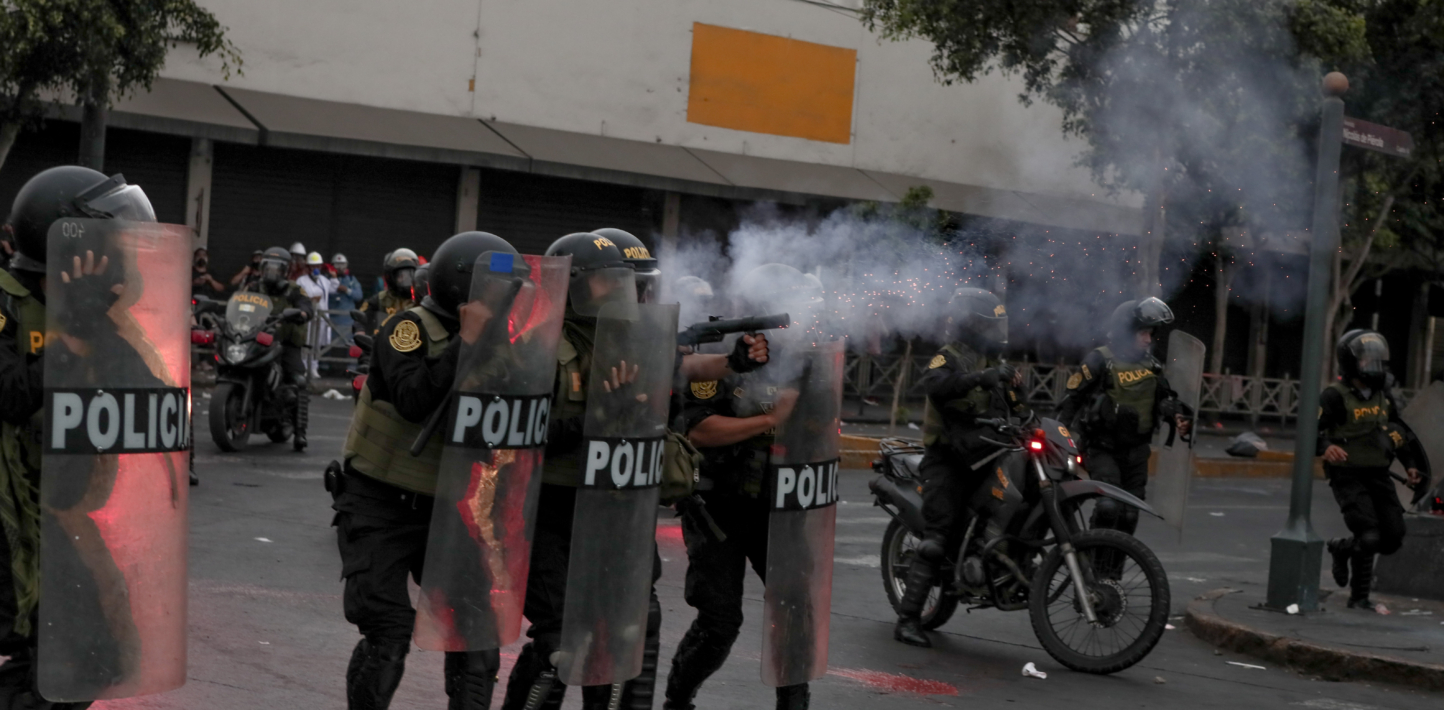The horrific misuse of tear gas by security forces during brutal crackdowns on protests in Iran, Peru and Sri Lanka last year are among many new incidents detailed in Amnesty International’s updated Tear Gas: An Investigation.
The interactive website now includes details of 30 new incidents in 13 countries where police and security forces caused harm by inappropriately using tear gas.
Since launching the Webby Award-winning site in 2020, Amnesty International has verified incidents of tear gas misuse in more than 115 countries and territories, including France, Guatemala, India, Israel/Occupied Palestinian Territories, Lebanon, Mali, Myanmar, Nigeria, Serbia, Sudan, Tunisia, Uganda, and the USA.
Authorities worldwide must respect the right to peaceful protest.
Marija Ristic, Digital Verification Corps Manager, Amnesty International
“Year after year, Amnesty International continues to document dangerous and reckless uses of tear gas around the world,” said Marija Ristic, Amnesty International’s Digital Verification Corps Manager.
“People have taken to the streets in protest to call for their human rights to be respected, only to be met with unnecessary violence or excessive force, including in many cases, the unlawful use of tear gas.
“Authorities worldwide must respect the right to peaceful protest, and hold to account anyone unlawfully using tear gas against people exercising their fundamental human rights.”
Amnesty International’s ongoing Protect the Protest campaign is also documenting attacks on peaceful protest in solidarity with those targeted and to support the social movements pushing for human rights change worldwide.
Misuse causing death and injury
Throughout 2022, authorities in Iran systematically adopted a militarized response to localized and nationwide protests, using live ammunition, metal pellets, tear gas and water cannon to crush largely peaceful protests. Hundreds of protesters and bystanders were unlawfully killed by security forces, including dozens of children. A six-year-old girl was killed after being hit in the head with a tear gas cannister. Thousands of people sustained significant injuries, including being blinded in their eyes, for which many did not seek medical care due to fear of arrest.
During widespread protests in Peru that started in December 2022, the Army and National Police of Peru unlawfully fired lethal weapons and used other less lethal weapons against the population, especially against Indigenous people and campesinos (rural farmworkers). This unlawful use of force led to 49 deaths from state repression to February 2023. The protests were mostly peaceful, but evidence indicated that the police and army fired bullets, pellets and tear gas recklessly, killing or injuring bystanders, protesters, and those providing first aid to injured people.
In Sri Lanka, the government intensified its crackdown on dissent as thousands of people protested against the country’s dire economic situation. The misuse of tear gas and water cannon became commonplace in response to demonstrations, affecting protesters and bystanders, including children. Such tactics caused at least one death at a protest in July 2022.
And in Ukraine, Russian security forces fired tear gas at peaceful protesters in Kherson who took the streets in April 2022 to demand an end to the Russian occupation of their city.
The latest website update includes similar examples of misuse in Colombia, Ecuador, Greece, India, Indonesia, Iraq, Israel/Occupied Palestinian Territories, and Türkiye.
Open-source investigation
Amnesty International’s Crisis Evidence Lab began researching tear gas misuse in 2019, primarily through analysing videos posted to social media. Using open-source investigation methods, the organization identified and verified instances where tear gas was misused, confirming the location, date, and validity. The analysis was carried out by Amnesty International’s Digital Verification Corps, a network of students at five universities on four continents, trained to verify videos and photos of potential human rights violations from conflicts and crises across the world.
Amnesty International documented police abusing tear gas in multiple ways, including: firing into confined spaces; firing directly at individuals; using excessive quantities; firing at peaceful protests; and firing against groups who may be less able to flee or more susceptible to its effects, such as children, older people, and people with disabilities.
Regulation needed
Despite its widespread misuse, there are no agreed international regulations on the trade in tear gas and other chemical irritants. Few states provide public information on the quantity and destination of tear gas exports, hampering independent oversight.
Amnesty International and the Omega Research Foundation have campaigned for more than two decades for greater controls on the production, trade and use of tear gas and other law enforcement equipment and weapons. As a result, the EU has introduced trade controls on some types of equipment, and the UN and the Council of Europe have recognized the need to regulate the export of law enforcement equipment which can be used for torture or other ill-treatment.
Following high-level diplomatic advocacy by the 60+ states of the Alliance for Torture-Free Trade, supported by an international coalition of civil society organizations, the UN is now exploring the potential development of international trade controls on law enforcement equipment – including tear gas – to prevent its use in torture or other ill-treatment. In January 2023, Amnesty International and over 30 NGOs joined together to sign the Shoreditch Declaration, calling for an international treaty to control the trade in tools of torture used to suppress peaceful protests and abuse detainees around the world.


